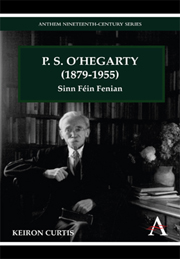Chapter Four - The Catholic Clergy
from Part I
Published online by Cambridge University Press: 05 March 2012
Summary
‘show me an Irishman who has lost the Faith’, he said, ‘and I will show you a Fenian.’
Denounced by the Hierarchy in 1863, condemned by Archbishop of Dublin Dr Paul Cullen (1803–1877) in 1865, and, after the failed rising of 1867, damned along with other secret societies in Pope Pius IX's 1870 Papal Bull, the IRB swiftly earned the wrath of the Catholic Church in Ireland. As the IRB was neither illegal nor secretive in the United States, and since it boasted of a mass following since its creation in New York in 1858 by John Mahoney (the source of a separate, but nonetheless welcome source of funding to its Irish-based cohort), such clerical condemnations had little effect on US Fenians. In Ireland, however, the clerical line extended far into local parish and community life, into which the IRB became an intrusive force invading traditionally hallowed and, until then, uncontested clerical territory.
A key feature of clerical resentment of the IRB came from the presumed linkages existing between it and the long legacy of agrarian-based secret societies, the better known among these being the eighteenth-century Catholic ‘Defenders’ and ‘Rightboy’ (O'Hegarty in his A History of Ireland Under the Union calls them ‘Whiteboy’) societies. Formed to carry out sometimes violent campaigns, these outlawed societies targeted mainly the property and livestock of local absentee landlords, despite longstanding clerical condemnation.
- Type
- Chapter
- Information
- P. S. O'Hegarty (1879–1955)Sinn Féin Fenian, pp. 59 - 74Publisher: Anthem PressPrint publication year: 2010



